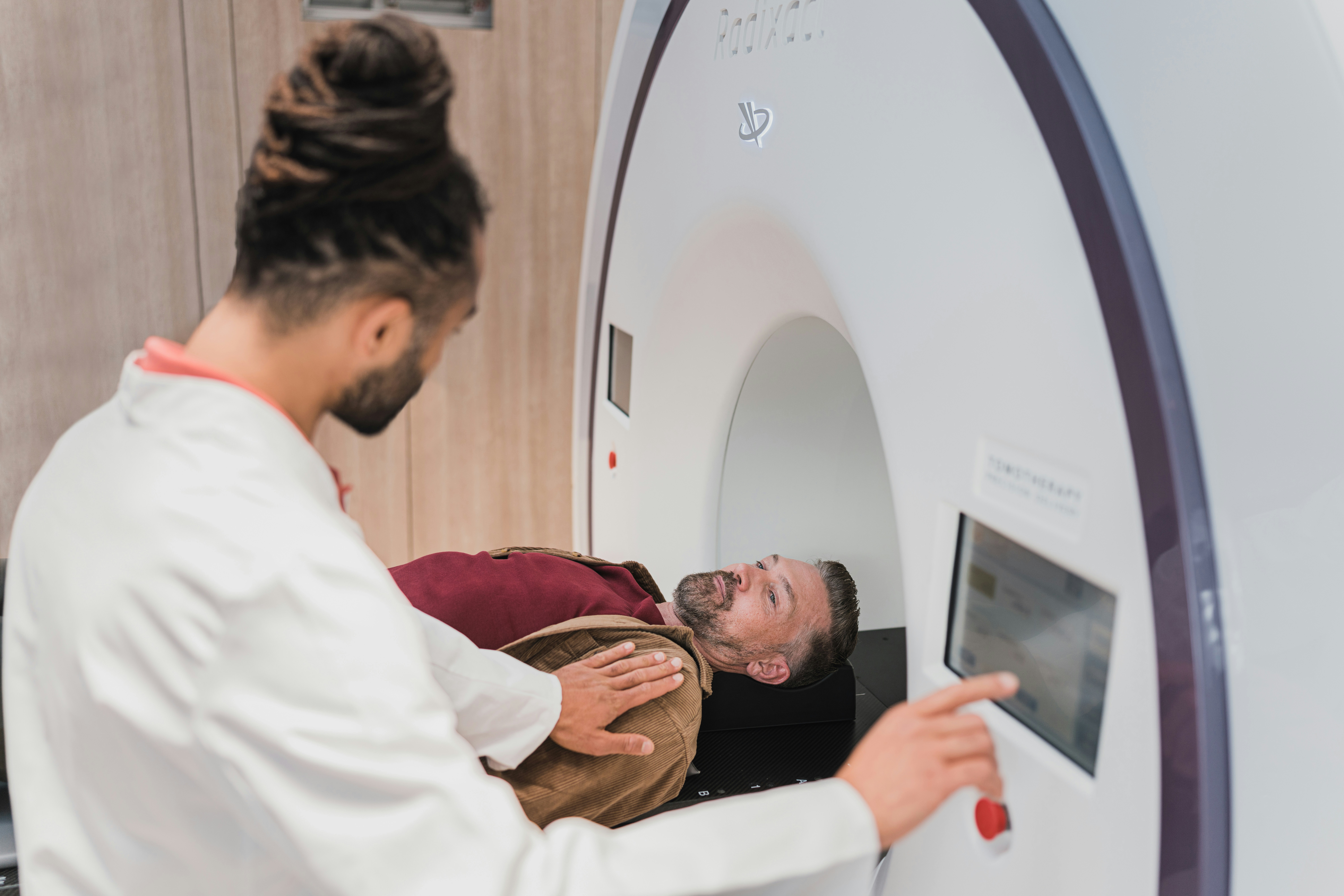What Is Immobilisation & Why Does It Matter In Radiotherapy?
Whilst based on a single, unifying principle, the development of radiotherapy as a treatment has taken over a century and even in the 2020s there are fundamental changes in how treatments are planned, organised and carried out.
There are many different types of radiotherapy, each with different purposes, effects and durations, but many of them share commonalities and one of the core principles of many types of radiotherapy treatment that does not get talked about as often is the necessity of immobilisation.
Whilst immobilisation is an important part of healthcare, particularly in the emergency services as a way to prevent potential complications in people with spinal injuries, keeping patients as still as possible during treatment is an essential part of radiotherapy treatments.
There are many different reasons for this, both straightforward and somewhat more complex, as well as the potential for treatments to be developed that make the need for immobilisation obsolete.
What Is Immobilisation In Radiotherapy?
Radiotherapy is a complex treatment pathway that could be described as akin to shooting a moving target.
The body is in a constant state of flux, with organs and other internal parts of the body constantly shifting, pulsing, growing and shrinking as the various bodily systems that keep people alive work.
This is a complexity for radiotherapy, as it can potentially mean that a tumour, growth or lesion found using a diagnostic scan could have moved, affecting the efficacy of treatment.
At that point, there are two options a radiotherapist would have; increase the scope of the treatment, guaranteeing that more healthy tissue would be damaged but also increasing the likelihood of successful treatment, or locking down the body part in such a way as to minimise this natural movement.
This is the principle known as immobilisation and takes a wide variety of different forms depending on the treatment being undertaken.
For example, Gamma Knife, a form of stereotactic radiosurgery used to remove brain tumours with surgical precision but no surgical incisions, requires the fitting of a metal frame to the head, attached with pins.
This keeps the head stable, rigidly in place and provides reference points for the multiple targeted beams of radiation. Both of these make the chances of a successful treatment substantially higher, whilst avoiding the potential consequences of radiation damage.
The Gamma Knife method, in particular, is famously very precise with a margin of error within just a millimetre, avoiding damage to healthy brain tissue as much as possible.
This is how the treatment can be undertaken in a single day with tremendous accuracy.
People move a lot, often unconsciously, and these slight movements can seriously affect the potential accuracy and therefore success of treatments. This ultimately makes immobilisation necessary.
Other forms of immobilisation can be as simple as restraining straps, bite blocks, wedges, rollers, headrests and masks.
The Principles Of Immobilisation
Ultimately, seven main principles are used by radiotherapists when deciding on appropriate immobilisation tools:
- Patients must be as comfortable as possible whilst wearing them.
- They must be as simple to set up as possible.
- They must not cause problems with radiotherapy treatment.
- They must not make the radiation beam weaker.
- They must not cause artifacting or other issues with diagnostic scans.
- They should ideally be transparent so a doctor can see where they are aiming their treatment.
- They should be easy to make marks on to assist with the initial calibration of radiation beams.
However, whilst the frames, masks and apparatus are designed to be as light and comfortable as possible, there is no denying that the concept of immobilisation is potentially distressing.
In a 2018 study on head and neck cancer treatment, which relies on a perspex mask to keep the face in position, a quarter of patients reported “mask anxiety”, or a fearful or distressing feeling experienced before and during treatment whilst the mask was on.
Most of the time, this can be managed, and a considerable amount of treatment time is taken to educate a patient about immobilisation, being comforting, reassuring and explaining why it matters.
However, there is the potential for this critical part of radiotherapy to change, if developments in the field of real-time adaptive radiotherapy become widely applicable to treatments.
Thanks to the increasing power of computer technology and the rise of medical AI, studies and tests have found ways to provide diagnostic data at the same time as treatments and adapt the treatment accordingly.
This would, in theory, make radiotherapy treatments accurate even without the need for immobilisation, but at present, its use is still limited due to the lack of a standard adaptive radiotherapy treatment.


